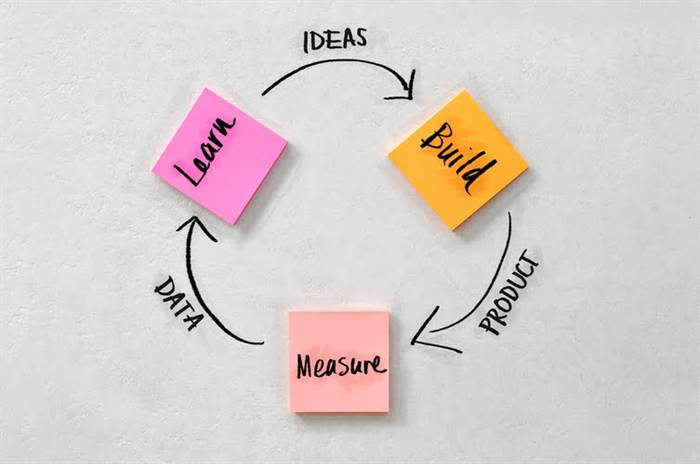They may be feeling some anxiety due to uncertainty about their individual role or future responsibilities. They could really feel sadness or a sense of loss about the changes coming to their staff relationships. And on the similar time, group members could feel a way of deep satisfaction at the accomplishments of the team.
When a new group varieties, its members are not sure about its function and objectives. The group managers should handle that and focus on clarifying the team’s function and bringing every staff member on the identical page. In the sooner levels of your team’s formation, set up a clear communication plan. A communication plan is a top level view of how your staff is going to speak important data to key stakeholders. Clarity on the varied avenues of communication permits staff members to successfully get work done, perceive their roles, and know the place to seek out the knowledge they need about work. Establishing a communication plan can help you do all of these items in a means that’s simple on your staff to observe.
During the Performing stage, all group members are working at an optimum level. During the Norming stage of team growth, team members begin to resolve the discrepancy they felt between their particular person expectations and the fact of the team’s expertise. If the group is successful in setting more versatile and inclusive norms and expectations, members should experience an elevated sense of comfort in expressing their “real https://www.globalcloudteam.com/” ideas and feelings. Team members feel an rising acceptance of others on the staff, recognizing that the number of opinions and experiences makes the team stronger and its product richer. Members begin to really feel part of a team and might take pleasure from the increased group cohesion. The most commonly used technique was created by Bruce W. Tuckman in the Nineteen Sixties.
Team-building exercises are sometimes carried out to help a staff via its development course of. The first step in a team’s life is bringing together a group of individuals. Individuals give consideration to defining and assigning duties, establishing a schedule, organizing the team’s work, and other start-up issues. In addition to specializing in the scope of the team’s objective and technique four stages of group development of approaching it, individuals in the formation stage are additionally gathering impressions and details about each other. Since folks generally want to be accepted by others, during this period they usually avoid conflict and disagreement. Team members could begin to work on their tasks independently, not yet focused on their relationships with fellow staff members.
For this reason, that is the stage that normally slows a staff down. Focus on building a shared understanding throughout your group and with stakeholders. As a result of these research, a fifth stage, “adjourning,” was added to the speculation (Tuckman & Jensen, 2010).
Stage 1: Forming Stage
To overcome issues throughout the group, the leader may need to develop a conflict management process. In addition, targets may be broken down into smaller steps that can be simply delegated to members with these particular expertise. For the race you are running, you might ask your pal to begin setting objectives of running to a particular level earlier than stopping to walk. This makes you happier because you get your pal to run additional, serving to your tempo.

They accept others as they are and make an effort to maneuver on. The danger here is that members may be so targeted on preventing battle that they are reluctant to share controversial ideas. In the Performing stage, the group makes significant progress in the direction of its targets. Commitment to the staff’s mission is high and the competence of staff members can additionally be high. Team members ought to proceed to deepen their information and skills, including working to repeatedly improving staff development.
Stage 2: Storming Stage
This is the stage when things begin to settle down as your staff finds their groove. As they grow extra comfy working collectively, team members are extra snug asking for assist finishing a task or getting constructive suggestions. Your team begins to increase their productiveness at this stage as they become extra acquainted with their teammates and their working styles. The initial stage is normally marked by a mix of attitudes and emotions. Some members might be excited and optimistic about joining, while others shall be anxious or maybe skeptical about their roles.
- Mark contributions as unhelpful if you find them irrelevant or not valuable to the article.
- Your group starts to increase their productivity at this stage as they turn out to be more conversant in their teammates and their working types.
- After studying everything above, you have a fairly good thought the place your team is at – but does the remainder of the staff agree?
- Best of all, teams at this stage will largely be capable of handle themselves, resolve their very own conflicts and act collectively, as a whole.
- As properly, it helps to train folks in group work enabling them to perform their full potential (Bruce Tuckman’s 1965, n.d.).
- Even probably the most high-performing teams will revert to earlier levels in certain circumstances.
In most skilled circumstances there shall be cases the place staff might need to work together to complete a common objective or task. These situations can usually be the cause of frustration, anxiousness, and burnout for one or all members involved within the group (Mastering 5 Stages, n.d.). Members of a flustered and annoyed group can look at the 5 levels and use the behaviours that they’re exhibiting or general emotions of the group to track their progress within the five phases. Tuckman’s use of figuring out words such as coping, anticipation, dissatisfaction, and optimism provides members teams the instruments to recognize their stage of improvement. They can begin working toward fixing any current issues or decide if they’re ready to move on to the following stage of improvement (Roy, 2019). Originally the mannequin, Bruce Tuckman (1965) solely included 4 phases of staff growth, these have been Forming, Storming, Norming, and Performing.
The Levels Of Team Growth
With a clear communication plan in place, your group will know how to focus on their issues with the the rest of the staff in a constructive method. Whether you’re constructing a model new group or engaged on a particular project with cross-functional companions, it’s important to ascertain your team’s mission early on. Setting a objective, even earlier than you begin working collectively, establishes some ground guidelines to concentrate on and ensures that everybody is on the same page and shifting in the path of the identical objective. Because storming can be contentious, members who’re averse to conflicts may find it unpleasant or even painful. This can decrease motivation and effort by drawing attention away from duties. In some cases storming (i.e., disagreements) can be resolved rapidly.

“With group norms and roles established, group members concentrate on reaching common objectives, typically reaching an unexpectedly excessive stage of success.”[4] By this time, they’re motivated and knowledgeable. The group members at the second are competent, autonomous and capable of deal with the decision-making course of without supervision. Dissent is anticipated and allowed as lengthy as it is channelled through means acceptable to the group. In the Performing stage of team improvement, members really feel satisfaction in the group’s progress.
Performing Stage
The chief of the group will then describe the duties to the group, describe the totally different behaviours to the group and the means to deal and deal with complaints. Tolerance of every team member and their variations must be emphasized; without tolerance and endurance the team will fail. This phase can become damaging to the group and will lower motivation if allowed to get out of control. Some teams will never develop past this stage; however, disagreements within the team can make members stronger, more versatile, and able to work more effectively collectively.

At this stage, having the skills to facilitate open dialogue and enforce accountability is important. This is when issues “get real.” Having discovered some level of comfort on the group, some group members may begin to distrust others—whether because of interpersonal clashes, past experiences or different causes. Resistance to assigned duties and bristling at sure guidelines or strategies could occur. At this stage, members usually begin to query the wisdom of the project at hand and even the purpose of the staff itself. Whatever the name or sort may be, each team starts someplace.
Your good friend is happy because he has a much less daunting objective to succeed in. Adjourning is the ultimate stage that occurs when the group is about to disband. Team members shift their consideration away from task orientation to a relationship focus (McShane et al., 2018, p. 233). During this last stage, the staff feelings may be concerns and anxiety because of the uncertainty or future. At the same time emotions of satisfaction and combined emotions. During this stage some members lose focus and scale back productiveness and they focus the duties in three sections – completion of deliverables, analysis and shutting ( Stein, as cited in McShane et al., 2018).
5 In-depth Look: Tuckman’s Model – Five Phases Of Staff Development
Each stage pertains to a project section and establishes roles and mutual goals. Below, the speculation is utilized to the lifecycle of a project and the role of the project supervisor. After working through the significant points, the group begins to coalesce and actually work as a team, supporting each other, and this is named the Norming stage. During this part of staff constructing, duties are clearly defined and the staff begins to map out a plan to attain its goals. The team’s leader is more engaged in team building at this stage to verify everybody understands the plan.
The adjourning stage is an important method of offering closure, and it can assist group members successfully move on to the next work project or team with the sense of a job properly carried out. Team Tasks through the Storming stage of development call for the group to refocus on its goals, maybe breaking bigger objectives down into smaller, achievable steps. The team may have to develop each task-related abilities and group course of and conflict management abilities. A redefinition of the staff’s goals, roles and duties may help staff members previous the frustration or confusion they experience through the Storming stage. The beginning stage of staff growth gives members feelings of pleasure and anxiousness. They are enthusiastic about reaching objectives, but anxious about how properly they will work with the staff.
